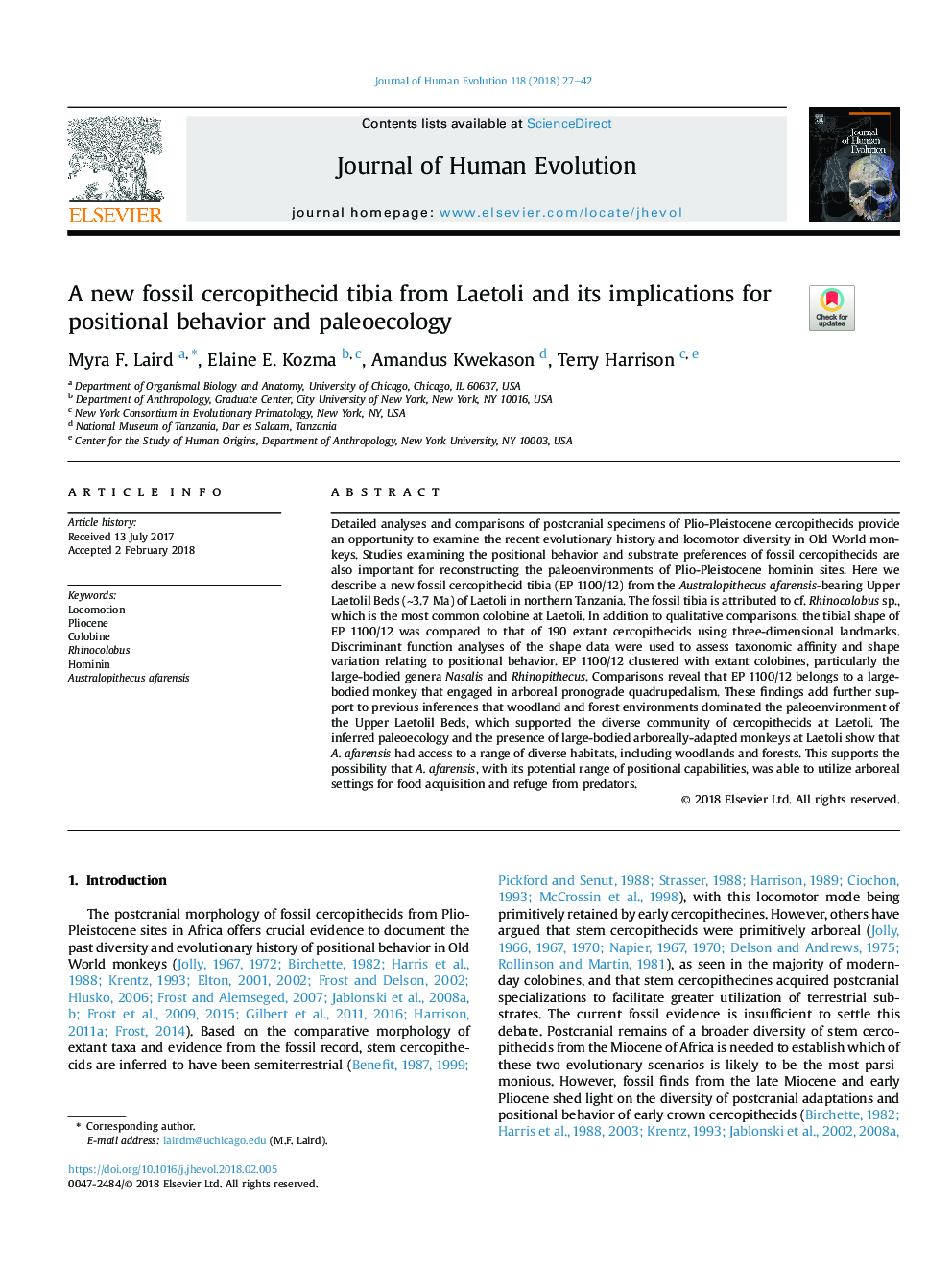| کد مقاله | کد نشریه | سال انتشار | مقاله انگلیسی | نسخه تمام متن |
|---|---|---|---|---|
| 8887283 | 1628131 | 2018 | 16 صفحه PDF | دانلود رایگان |
عنوان انگلیسی مقاله ISI
A new fossil cercopithecid tibia from Laetoli and its implications for positional behavior and paleoecology
دانلود مقاله + سفارش ترجمه
دانلود مقاله ISI انگلیسی
رایگان برای ایرانیان
موضوعات مرتبط
علوم زیستی و بیوفناوری
علوم کشاورزی و بیولوژیک
بوم شناسی، تکامل، رفتار و سامانه شناسی
پیش نمایش صفحه اول مقاله

چکیده انگلیسی
Detailed analyses and comparisons of postcranial specimens of Plio-Pleistocene cercopithecids provide an opportunity to examine the recent evolutionary history and locomotor diversity in Old World monkeys. Studies examining the positional behavior and substrate preferences of fossil cercopithecids are also important for reconstructing the paleoenvironments of Plio-Pleistocene hominin sites. Here we describe a new fossil cercopithecid tibia (EP 1100/12) from the Australopithecus afarensis-bearing Upper Laetolil Beds (â¼3.7 Ma) of Laetoli in northern Tanzania. The fossil tibia is attributed to cf. Rhinocolobus sp., which is the most common colobine at Laetoli. In addition to qualitative comparisons, the tibial shape of EP 1100/12 was compared to that of 190 extant cercopithecids using three-dimensional landmarks. Discriminant function analyses of the shape data were used to assess taxonomic affinity and shape variation relating to positional behavior. EP 1100/12 clustered with extant colobines, particularly the large-bodied genera Nasalis and Rhinopithecus. Comparisons reveal that EP 1100/12 belongs to a large-bodied monkey that engaged in arboreal pronograde quadrupedalism. These findings add further support to previous inferences that woodland and forest environments dominated the paleoenvironment of the Upper Laetolil Beds, which supported the diverse community of cercopithecids at Laetoli. The inferred paleoecology and the presence of large-bodied arboreally-adapted monkeys at Laetoli show that A. afarensis had access to a range of diverse habitats, including woodlands and forests. This supports the possibility that A. afarensis, with its potential range of positional capabilities, was able to utilize arboreal settings for food acquisition and refuge from predators.
ناشر
Database: Elsevier - ScienceDirect (ساینس دایرکت)
Journal: Journal of Human Evolution - Volume 118, May 2018, Pages 27-42
Journal: Journal of Human Evolution - Volume 118, May 2018, Pages 27-42
نویسندگان
Myra F. Laird, Elaine E. Kozma, Amandus Kwekason, Terry Harrison,